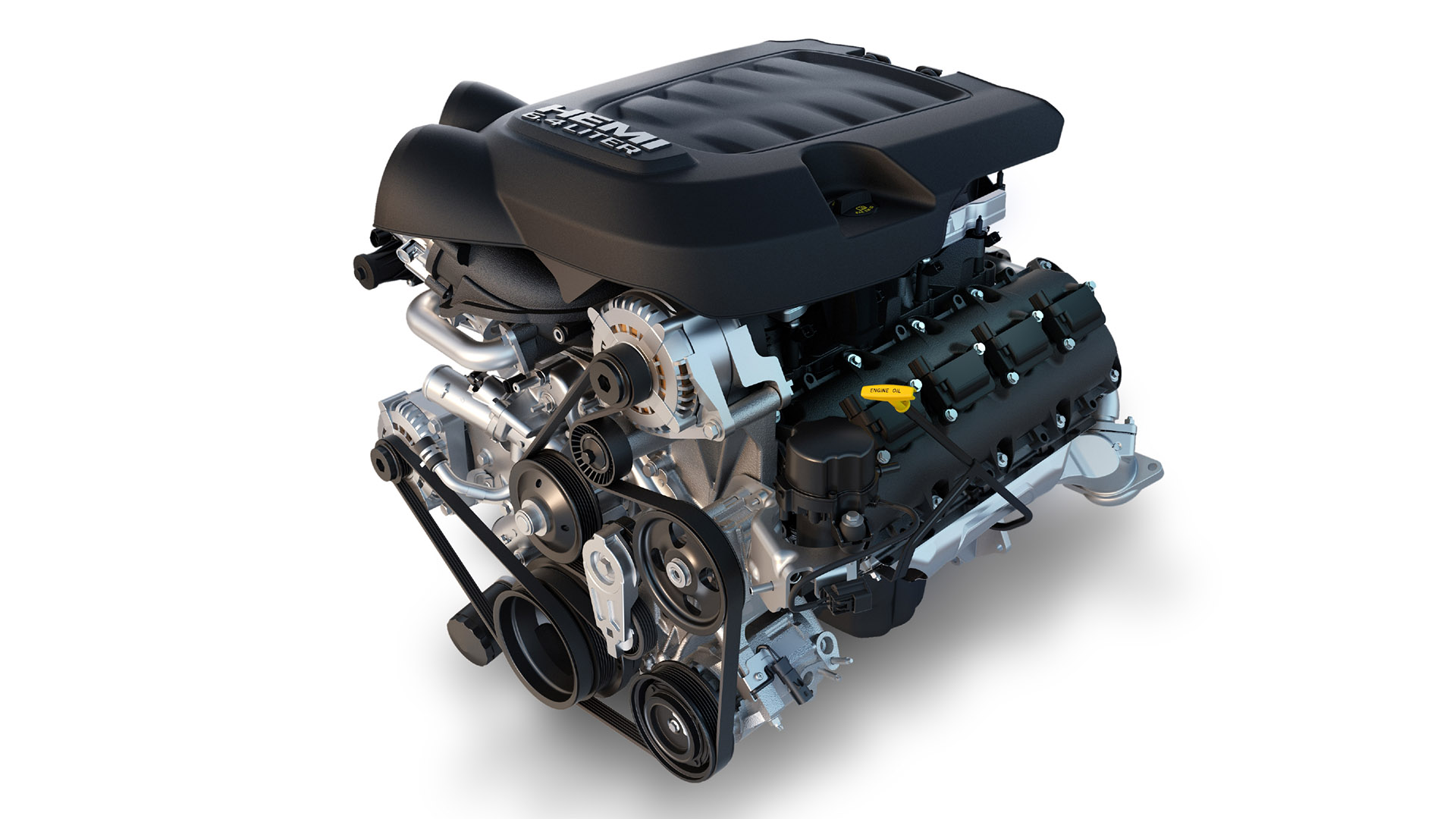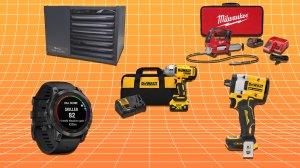

We may earn revenue from the products available on this page and participate in affiliate programs. Learn more ›
Despite the complexity of modern vehicles, they still use technologies that have been a part of humanity’s toolbox since The Holy Roman Empire. Pulleys are believed to have been used in ancient Mesopotamia, and today, they’re found on car engines attached to various acc 9*essories. Linking and simultaneously motivating these pulleys as a single unit is something called the serpentine belt.
A serpentine belt is crucial to running numerous things in a car, including the air conditioning and the vehicle’s electrical charging system. It also causes one of the most well-known and common problematic car sounds: the squeak.
The squeak can be high-pitched, low-pitched, intermittent or constant, and all of the potential sounds will drive you nuts. Though servicing a part that affects so many functions can be worrying, The Drive’s radioactive, er, hyperactive info team can assuage those fears with definitions, examples, step-by-step instructions, and photos. Let’s explore.
What Is a Serpentine Belt?
A serpentine belt is a flexible closed-loop reinforced piece of rubber with a flat smooth surface on one side and v-shaped grooves, also known as ribs or teeth, on the other. It is located on the exterior of the engine.
What Does a Serpentine Belt Do?
Using pulleys and a tensioner, a serpentine belt uses rotational power from one source and transfers it to other parts to run various accessories on the car. The serpentine belt is in a state of constant rotational movement when the car is running.
What Drives the Serpentine Belt?
One of the pulleys the belt wraps around is connected to the engine crankshaft. When that rotates, the belt rotates.

What Accessories Does the Serpentine Belt Typically Drive?
A serpentine belt slithers over several pulleys whose rotational energy powers different devices. The belt is typically connected to the following accessories:
Alternator
The belt helps power the alternator, which keeps your battery charged.
Power Steering Pump
The power steering pump pressurizes the hydraulic steering fluid. Without the belt running the pump, the driver could experience a sudden loss of power steering, which makes handling much tougher.
Air Conditioning Compressor
An air conditioning compressor sends fluid throughout the air conditioning system, so its functionality is key to keeping cool.
Water Pump
An engine needs the water pump to push coolant through the system and keep its temperature down. If the belt fails, it could result in your car overheating.
How Is Tension on the Serpentine Belt Created and Maintained?
The pulley systems on modern engines typically utilize an automatic tensioner that puts consistent pressure on the belt and keeps it taught. Most modern belt tensioners are spring-loaded or hydraulic and contain dampers to keep the system running smoothly.

What Is an Idler Pulley?
Idler pulleys are used to route the serpentine belt in the right directions. They are not attached to any accessories, so they basically just rotate with the belt and keep it in place.
How Long Do Serpentine Belts Last?
Most manufacturers recommend replacement soon after the dial rolls over 60,000 miles.
No matter the mileage or condition of your vehicle, you should quickly inspect your serpentine belt every time you’re under the hood. It only takes a few seconds to look for signs of a bad belt.
If it fails unexpectedly, you will likely get stuck on the side of the road. If you try driving with a busted belt, you could damage the vehicle due to overheating or drain your battery.

Signs and Symptoms of a Worn Serpentine Belt
Regular inspection of the serpentine belt is required to ensure it is consistently on track and in line. Regular inspection will also help identify a bad belt before it fails while you’re driving. There are several ways one can pick up on a bad, or soon-to-fail, serpentine belt. These symptoms are pretty good indicators.
Visual
- Fraying
- Cracking
- Shiny or glazed surface area
- Dirt or grease build-up
- Slack
Non-Visual
- Squeaking, chirping squealing, or rattling noises (the most common)
- Failing charging system or weak battery
- Failing air conditioning
- Overheating
Serpentine Belt Installation
Now that we’ve shown you what to look for with a bad serpentine belt, you may be wondering how to change one. Changing a serpentine belt is something anybody with some patience and determination can handle. Let’s go through everything you’ll need for the job.
Basics
Estimated Time Needed: An hour
Skill Level: Beginner
Vehicle System: Engine
Safety
Working on your car can be dangerous and messy, so here’s exactly what you’ll need to ensure you leave the garage in the same condition you entered.
Everything You’ll Need To Change Your Serpentine Belt
We’re not psychic, nor are we snooping through your toolbox or garage, so here’s exactly what you’ll need to get the job done.
Tool List:
- Ratcheting wrench set or socket set
Parts List:
- New serpentine belt
Organizing your tools and gear so everything is easily reachable will save precious minutes waiting for your handy-dandy child or four-legged helper to bring you the sandpaper or blowtorch. (You won’t need a blowtorch for this job. Please don’t have your kid hand you a blowtorch—Ed.)
You’ll also need a flat workspace, such as a garage floor, driveway, or street parking. Check your local laws to make sure you’re not violating any codes when using the street because we aren’t getting your ride out of impound.

How To Change Your Serpentine Belt
We don’t know what vehicle you own, so it’s up to you to use your owner’s manual or service manual to locate the belt tensioner, identify the belt route or positioning, and figure out exactly what you’ll need to remove to access the belt, if anything. Once you figure that out, let’s get it.
- Park your car, pop the hood, and let it cool off.
- Remove any parts to gain access to the belt and belt tensioner.
- Locate the belt tensioner.
- Use a box wrench, socket wrench, or belt tensioner tool to slowly release pressure from the belt.
- Pull the belt off of all of the pulleys, slowly release the belt tensioner, and remove the belt.
- Route the new belt around the pulleys in the manufacturer-specified direction and path. The belt will not fit all the way around the belt tensioner.
- Slowly compress the tensioner to allow for the belt to be placed on the track. Slowly release the tensioner until the belt assumes the tension.
- Inspect all pulleys to make sure the belt is properly seated and evenly distributed.
- Reinstall all the removed parts.
Well done, that’s it!
Serpentine Belt FAQs
You have the questions, The Drive has the answers!
Q: Is There a Tool For Checking Belt Wear?
A: Yes! You can buy a small tool that measures the rib depth on the belt. If the belt shows improper depth, it’s time for a new one.
Q: So What is the Proper Tension For a Serpentine Belt?
A: Every part of the belt should be taught to the point that it takes a hard tug to show any slack. If the belt looks loose or will not stay taught, you might need to replace the belt tensioner. Many manufacturers recommend replacing the serpentine belt and tensioner at the same time.
Q: I’m Not a Rocket Scientist, Is It Hard To Put a Serpentine Belt On?
A: Yes and no. The act of removing the old belt and installing a new belt in and of itself is not too difficult. However, depending on the orientation of your engine and how it’s designed, it might be difficult to get to the parts or areas necessary to perform the job.
Q: But Can You Drive Without a Serpentine Belt?
A: No, we do not recommend attempting to drive if your serpentine belt or belt tensioner is not functioning correctly. If you get stuck on the side of the road, have your vehicle pushed to a safe place to perform the fix or tow it to a garage.
Q: Then How Expensive Is It To Replace a Serpentine Belt?
A: If you choose to do the work yourself, a replacement belt will typically cost $15-50 depending on the vehicle. However, it is recommended to also replace the belt tensioner at the same time, so add another $20-50 to the total. If you take it into a shop, you’ll likely pay $100-200.
Q: Can a Serpentine Belt Shrink?
A: It is technically possible, but it’s not going to happen while on your vehicle under tension. If anything, it will stretch out.

Got a question? Got a pro tip? Send us a note: guidesandgear@thedrive.com
